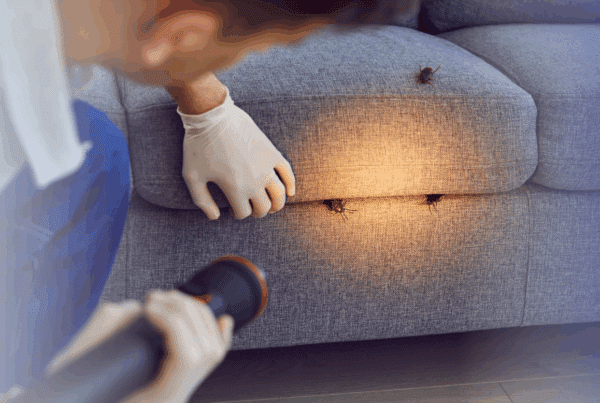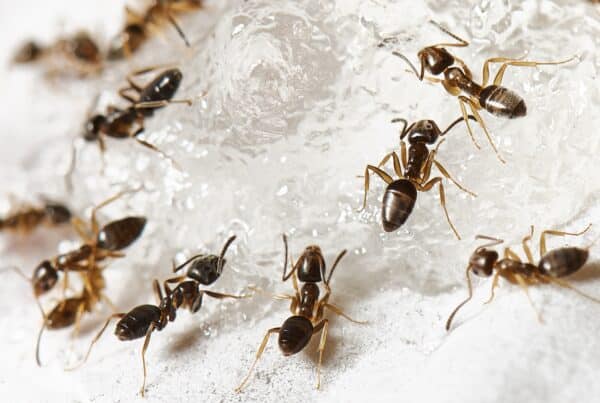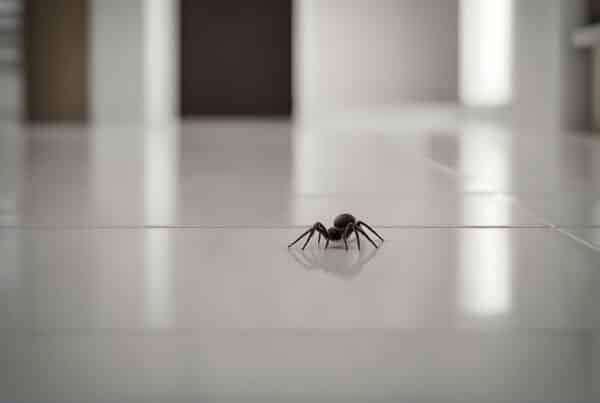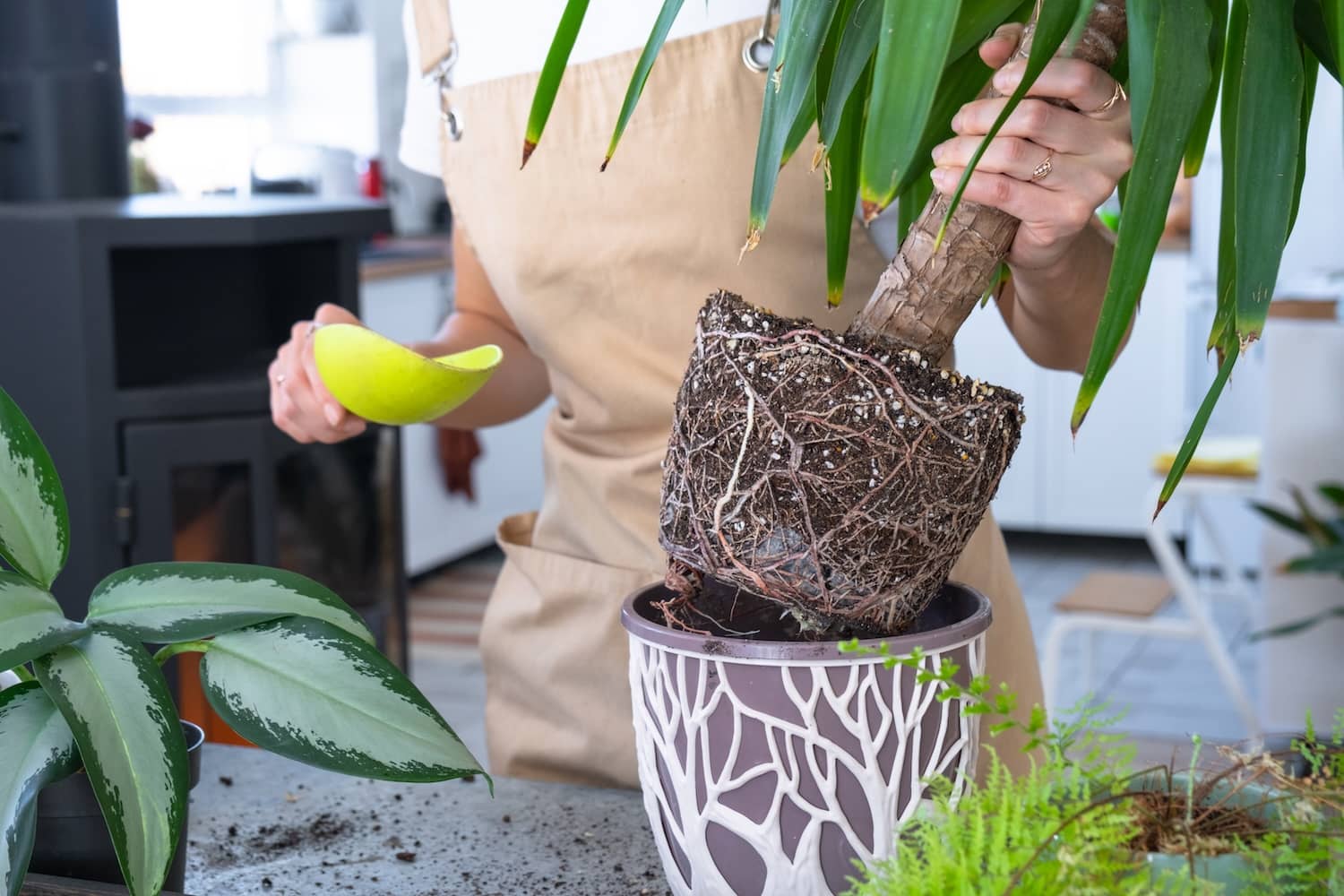
You love your houseplants, but you don’t love the cloud of tiny black flies that swarms every time you go near them. It’s frustrating, annoying, and makes your home feel less than clean. If you’re wondering how to get rid of gnats in houseplants and take back your space, you’ve come to the right place.
This guide will give you a fast, simple, and effective plan to eliminate those pests for good. We believe a healthy home is a happy home, and that starts with handling a small problem before it becomes a big one.
Are They Really Fungus Gnats?
Before you start any treatment, let’s make sure you’re fighting the right battle. Most of the time, those tiny flying insects around your plants are fungus gnats, not fruit flies. Knowing the difference is key to a quick victory.
Here’s a simple way to tell them apart:
- Fungus Gnats look like tiny dark mosquitos. They are weak fliers and tend to hover around your plant’s soil or crawl on its leaves and pot.
- Fruit Flies are a bit rounder, often tan or brown, and have more noticeable red eyes. You’ll find them zipping around your kitchen, especially near ripe fruit, sinks, or the trash can.
If you’ve identified fungus gnats, keep reading. You’re on the right track to getting rid of them.
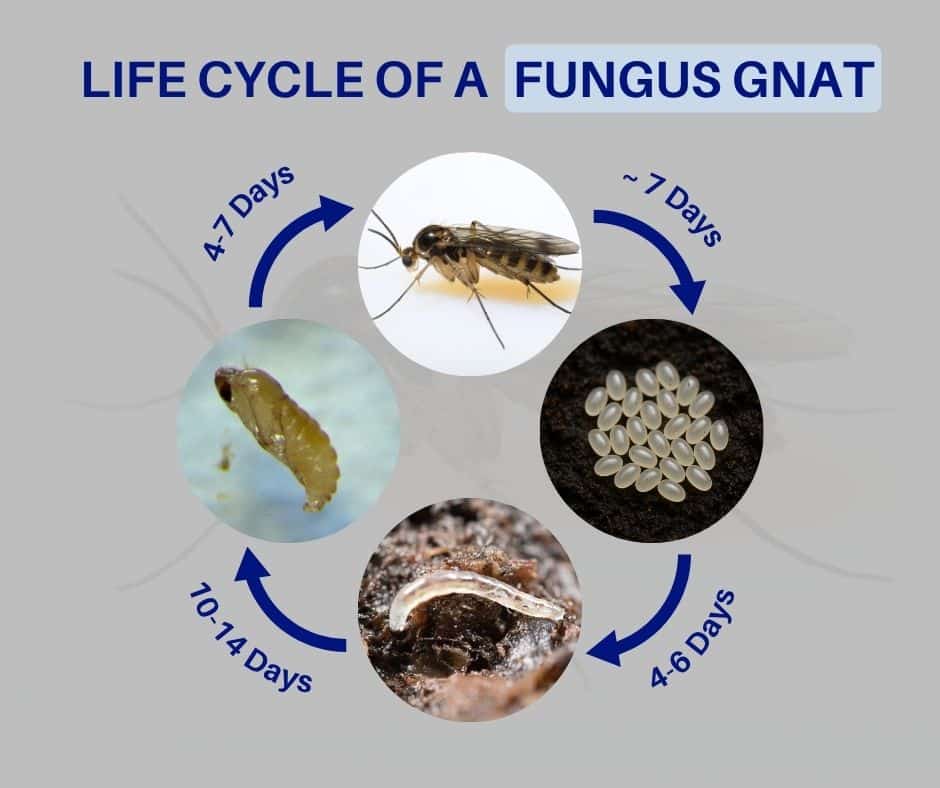
Why Gnats Love Your Houseplants
Understanding why gnats moved in is the first step to kicking them out permanently. The answer is simple: damp soil.
Fungus gnat larvae, the source of your problem, don’t eat your plants. They feed on the fungus and decaying organic matter that thrives in overly moist potting soil. This is where they get their name.
They usually enter our homes in one of three ways:
- On a new plant you brought home from the store.
- In a bag of contaminated potting mix.
- Through an open window or door.
A single female gnat can lay up to 200 eggs in the top layer of damp soil. Since their entire lifecycle can be as short as 17 days, you can see how a few gnats can turn into a full-blown infestation almost overnight.
Your 2-Step Plan on How to Get Rid of Gnats in Houseplants
To solve this problem quickly, you need to attack it on two fronts at the same time: stop the flying adults and eliminate the next generation growing in the soil.
Step 1: Clear the Air (Trap the Flying Adults)
This step provides immediate relief by catching the adult gnats that are flying around your home.
- Yellow Sticky Traps: This is your most effective tool. Gnats are attracted to the color yellow. Place these small, sticky sheets flat on the soil or on small stakes in your pots. You’ll be surprised how quickly they fill up.
- DIY Vinegar Trap: Create a simple trap by filling a small jar with an inch of vinegar and adding a few drops of dish soap. The gnats are drawn to the vinegar, but the soap breaks the surface tension, causing them to sink.
Step 2: Treat the Soil
Trapping adults is only a temporary fix. The key to getting rid of gnats in houseplants for good is to eliminate the larvae in the soil.
- Let the Soil Dry Out: This is the easiest and most important step. Fungus gnat larvae cannot survive in dry soil. Allow the top one to two inches of your plant’s soil to dry out completely between waterings.
- Use a Hydrogen Peroxide Drench: For a more active approach, you can use a diluted hydrogen peroxide solution. Mix one part 3% hydrogen peroxide with four parts water. Water your plant thoroughly with this mixture. The peroxide safely kills larvae on contact without harming your plant’s roots. It will fizz a little, which is normal.
- Try Bottom Watering: To keep the topsoil consistently dry, try bottom watering. Place your plant pot (it must have drainage holes) in a tray of water for about 15-20 minutes. The soil will soak up moisture from the bottom, leaving the top layer dry and inhospitable to gnats.

3 Simple Habits to Keep Gnats Gone for Good
Once the infestation is gone, a few new habits will prevent it from coming back.
- Master Your Watering: Always check the soil before you water. Stick your finger two inches deep; if it feels damp, wait a few more days. This single change is the most powerful preventative measure you can take.
- Choose the Right Pot & Soil: Make sure every pot has a drainage hole so excess water can escape. Use a well-draining potting mix to avoid creating a swampy environment.
- Quarantine New Plants: Before introducing a new plant to your collection, keep it isolated in a separate room for a week or two. This gives you time to spot any hidden pests before they can spread.
Tips for a Healthier Home Ecosystem
Your home is an ecosystem. A fungus gnat problem is often a sign that one small part of it, your soil’s moisture level, is out of balance. Thinking about the bigger picture can help you create a healthier, pest-free environment.
Ensure good airflow around your plants, keep your kitchen free of food debris that can attract other pests, and stay on top of general home maintenance. A well-cared-for home is naturally more resistant to all kinds of unwelcome guests.
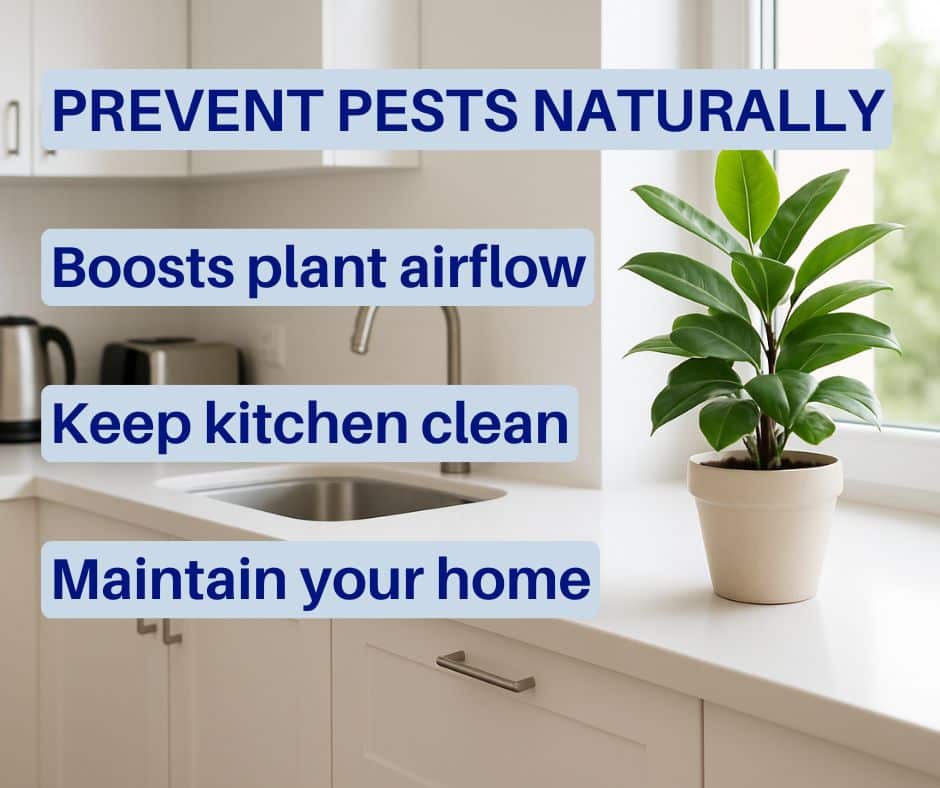
When to Call in the Experts
You’ve set traps and adjusted your watering schedule, but the gnats just won’t quit. When is it time to call for professional help?
Consider calling an expert if:
- The infestation seems overwhelming or has spread to every plant.
- You’ve tried these methods for several weeks with little to no improvement.
- You suspect other pests might be involved.
- You simply want a guaranteed solution without the guesswork.
While a pack of sticky traps may only cost around $10, a persistent infestation can signal a deeper issue with moisture. The fungus that gnats feed on is, in fact, a type of mold. If it’s thriving in your houseplants, it could be growing elsewhere, too.
Conclusion
Getting rid of gnats in your houseplants is entirely possible. By tackling both the adult flies and their larvae in the soil, you can achieve fast and lasting results. Remember, the key is to eliminate the excess moisture that allows them to thrive.
A healthy home environment goes beyond what meets the eye. If gnats and excess moisture have you concerned, it could be a sign of a deeper issue. Schedule your home health inspection today to ensure your home is safe, healthy, and truly comfortable.

